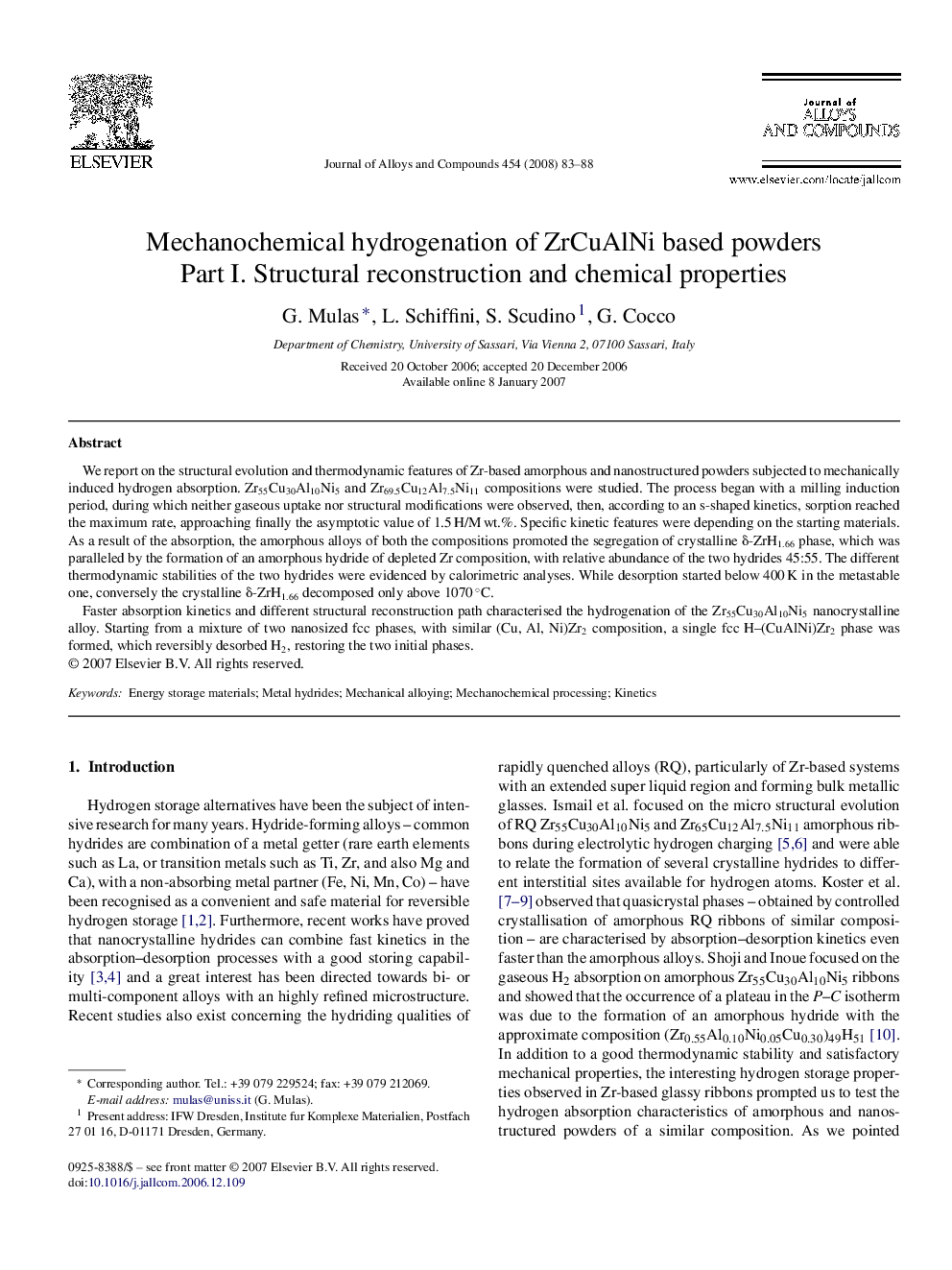| Article ID | Journal | Published Year | Pages | File Type |
|---|---|---|---|---|
| 1624757 | Journal of Alloys and Compounds | 2008 | 6 Pages |
We report on the structural evolution and thermodynamic features of Zr-based amorphous and nanostructured powders subjected to mechanically induced hydrogen absorption. Zr55Cu30Al10Ni5 and Zr69.5Cu12Al7.5Ni11 compositions were studied. The process began with a milling induction period, during which neither gaseous uptake nor structural modifications were observed, then, according to an s-shaped kinetics, sorption reached the maximum rate, approaching finally the asymptotic value of 1.5 H/M wt.%. Specific kinetic features were depending on the starting materials. As a result of the absorption, the amorphous alloys of both the compositions promoted the segregation of crystalline δ-ZrH1.66 phase, which was paralleled by the formation of an amorphous hydride of depleted Zr composition, with relative abundance of the two hydrides 45:55. The different thermodynamic stabilities of the two hydrides were evidenced by calorimetric analyses. While desorption started below 400 K in the metastable one, conversely the crystalline δ-ZrH1.66 decomposed only above 1070 °C.Faster absorption kinetics and different structural reconstruction path characterised the hydrogenation of the Zr55Cu30Al10Ni5 nanocrystalline alloy. Starting from a mixture of two nanosized fcc phases, with similar (Cu, Al, Ni)Zr2 composition, a single fcc H–(CuAlNi)Zr2 phase was formed, which reversibly desorbed H2, restoring the two initial phases.
